Northern pike are native to Alaska. Just not all of Alaska. Thanks to Ice Age geology, the southern third of the state was spared from the toothy, salmon- and trout-eating predator. It was believed, until very recently, that the only pike found in south-central Alaska are there thanks to illegal stocking, likely initiated by anglers in the 1950s who liked the prehistoric fish so much, they planted them in rivers and lakes from Anchorage south to the Kenai Peninsula. For years, Alaska Fish and Game fisheries managers have worked to remove unwanted pike from lakes and rivers in Southcentral Alaska — the predators can take over entire lakes and move between different lakes using rivers and streams. But four years ago, biologists were alerted to a pike population that shouldn’t exist at all.
Vogel Lake is remote — it’s only accessible by float plane or, during the winter, by snow machine, so it’s very unlikely that the pike found in the lake in 2019 were clandestinely planted by eager pike anglers. The lake is situated at the tip of the Kenai Peninsula, across Turnagain Arm from Anchorage. It’s a pothole lake with a solitary outlet — Miller Creek — that flows into Cook Inlet.
Could invasive pike have accessed Vogel Lake from the salty waters of Cook Inlet? The answer, a study on the Vogel Lake pike would reveal, is yes.
ADFG studied the otoliths (earbones), which help reveal an animal’s life history, of a pike from Vogel Lake. The research revealed that the pike had indeed spent some time in the ocean — likely migrating from an existing, stocked population in fresh water with a connection to the sea, through Cook Inlet, up Miller Creek and into Vogel Lake.
“When we got the results back, you could see on the graph that this fish actually came from somewhere, spent time in saltwater, and then went to a different freshwater location,” ADFG’s Krisinte Dunker told Alaska Public Media last month. Dunker is an invasive species research biologist. “That was very eye-opening to us.”
Eye-opening, but not entirely unheard of. Pike are native across the entire northern hemisphere, throughout Scandinavia, Russia, Canada and Alaska. Alaskan native pike most closely resemble the pike native to Siberia, but all northern pike are closely related. In Sweden, pike do frequent estuarial waters in search of prey — the water is brackish and not entirely salty, like the open ocean. Cook Inlet’s waters are also less salty than the open ocean and the water is becoming even less salty thanks to rapidly retreating glaciers that continue to add fresh meltwater to the sea. It would appear that the inlet’s freshwater inflow decreases salinity enough to enable northern pike to migrate and expand their range in watersheds where other fish evolved without them.
In other words, it’s just one more problem for ADFG to try and figure out as it works to conserve and restore flagging salmon runs in the area. Southcentral’s chinook, coho, chum and sockeye runs are down significantly in recent years. Adding a non-native apex predator to the equation just makes the effort to rebuild salmon stocks that much more challenging.
“Pike have been found in close to 150 waters (in Southcentral),” Dunker wrote in a blog post on the ADFG website. “And in many of those, the consequences have been catastrophic for native fisheries and the local economies that rely on them, making pike one of the worst invasive species in Southcentral Alaska.”

Some rivers in the region where pike are not native are now home to prevalent populations. The Susitna River, for instance, has a serious pike problem that’s complicating the already fragile state of the river’s salmon populations. ADFG, with limited resources, continually works to remove pike from high-value waters.
In Southcentral, the shallow, weedy lakes that have outflowing rivers and streams with connections to the sea provide ideal rearing habitat for young salmon, trout and char. Unfortunately, this is also the habitat pike prefer. While weed beds and submerged grasses are aquatic insect factories that help feed trout, char and young salmon before they migrate to the sea, these habitats are also ideal for a toothy ambush predator with an outsized appetite.
When non-native pike turn up in salmon waters, it usually results in a disaster.
“Research studies in Southcentral have shown that if juvenile salmon are available, they are typically preyed upon first,” Dunker wrote. “In the worst-case scenarios, they are preyed on so heavily that every last one is eventually eaten by pike.”
And, she wrote, once the pike eat their way through the juvenile salmon, they move on to trout, sculpin and even spiny sticklebacks. Eventually, they end up preying on each other, which results in stunted populations that are undesirable, even to the anglers who took to bucket biology and put pike in their non-native range to begin with.
And, in case you think the threat is minor in the grand scheme of things, with climate change likely doing more harm to salmon than any other single stressor, consider this. Alexander Creek in Southcentral, a tributary to the Susitna River, was once a chinook salmon stronghold. Today, thanks to pike, the salmon are gone. In fact, the entire Susitna watershed is struggling to produce salmon as the invasive pike continue to reshape the river basin’s fishery.
“The changes that pike have brought about in Southcentral have happened quickly, too quickly for native species to adapt,” Dunker wrote, “and the ecological and economic consequences have often been quite dire.”




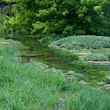






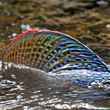
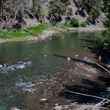








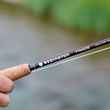



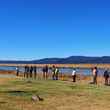
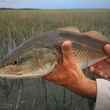


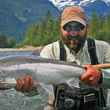
Comments
Dave replied on Permalink
Toothy, slimey, but tasty. Also quite easy, in my opinion, easy to catch. Prepping for eating a little more work. Get rid of the slime by putting the fish in some open container like a stoppered sink or a large cooler. Add some water to cover. Then pour in a couple of cups of vinegar. Do something else for a couple of hours like watching YouTube videos on how to remove the Y bones from the pike. When you return you can kind of scrub the fish down with your hands to remove the slime from the fish and then get rid of the vinegar water/slime and wash the container and fish with clear water. Now gill and gut them. Then cut fillets and then remove the skin as well as the Y bones.
Bread and fry. I have heard that if you catch a northern and immediately bleed it out no slime will result. No personal experience with that though. The best way to process northern though is to pickle it. Requires skinless fillets but does not require ANY bone removal. Cut the fillets into about 2" X 2" pieces and place into fresh kosher salt / vinegar water in a jar. Google making pickled fish for a refined recipe.The only thing I would add is to freeze the northern fillets for 2 or 3 days before pickling. This method of eating northern doesn't require any expertise at bone removal since the vinegar dissolves those pesky items.
Here in Minnesota the DNR kept test netting lakes and receiving comments from fishermen that there were too damned many hammer handles in some lakes and as a result were hurting other fish populations so the limit was increased to 10 daily with an allowance if you got a really big one.
Chris replied on Permalink
Couldn't agree more, Dave. I've had the pleasure and good fortune to enjoy many a shore lunch in the boreal north, with both walleye and pike on the menu. Once battered and seared in piping hot lard, some can't tell the two apart. I can ... and I like the pike better :)
Larry Rand replied on Permalink
If the northern is decent size, I chop off the head and cut strips of meat the long way, avoiding the bones all together. After taking off the skin, I can grind the pike for quenelles or gefilte fish, or I can twirl the strips into a circle, secure with a skewer and cook like a filet. The meat is delicate and not at all gamey.
Pages